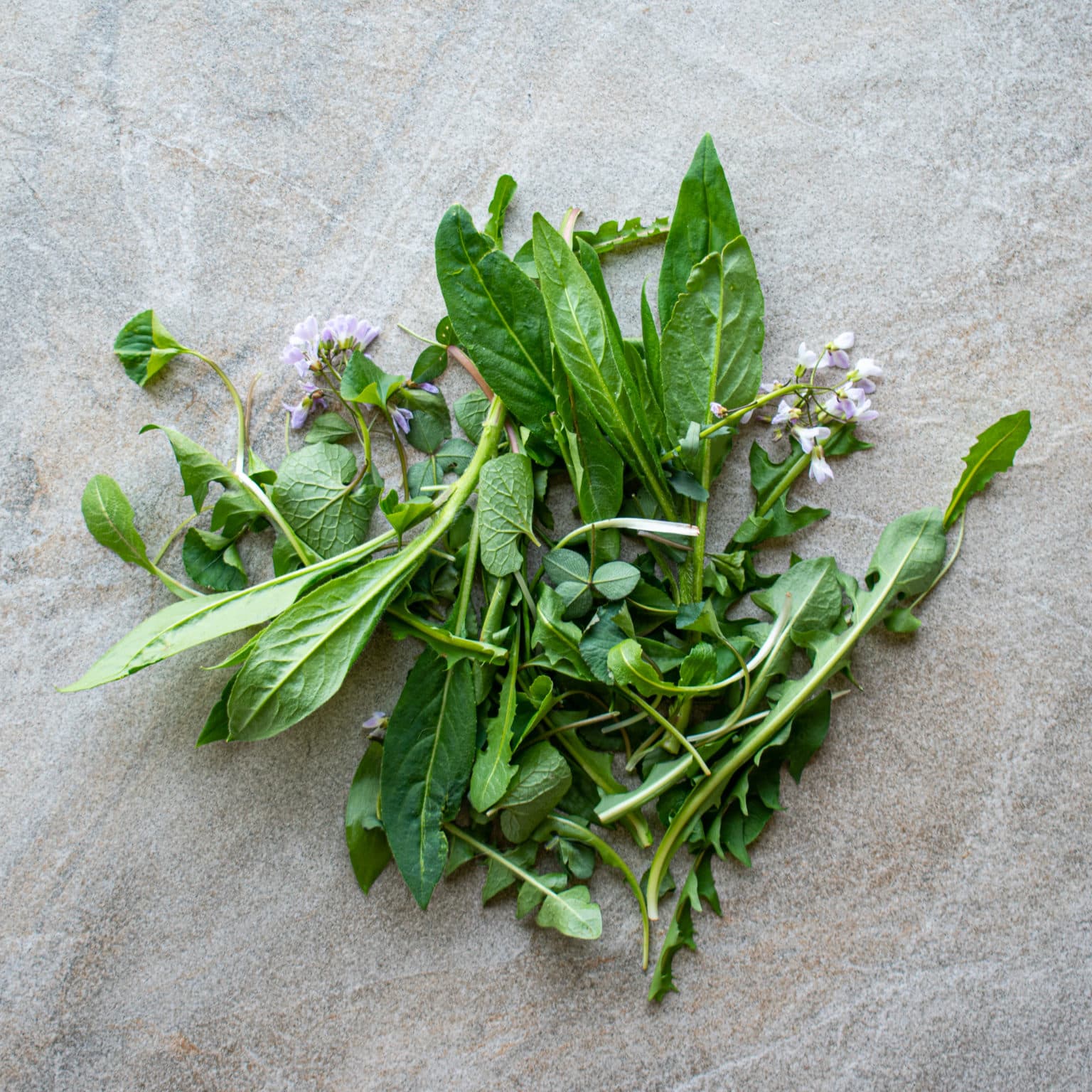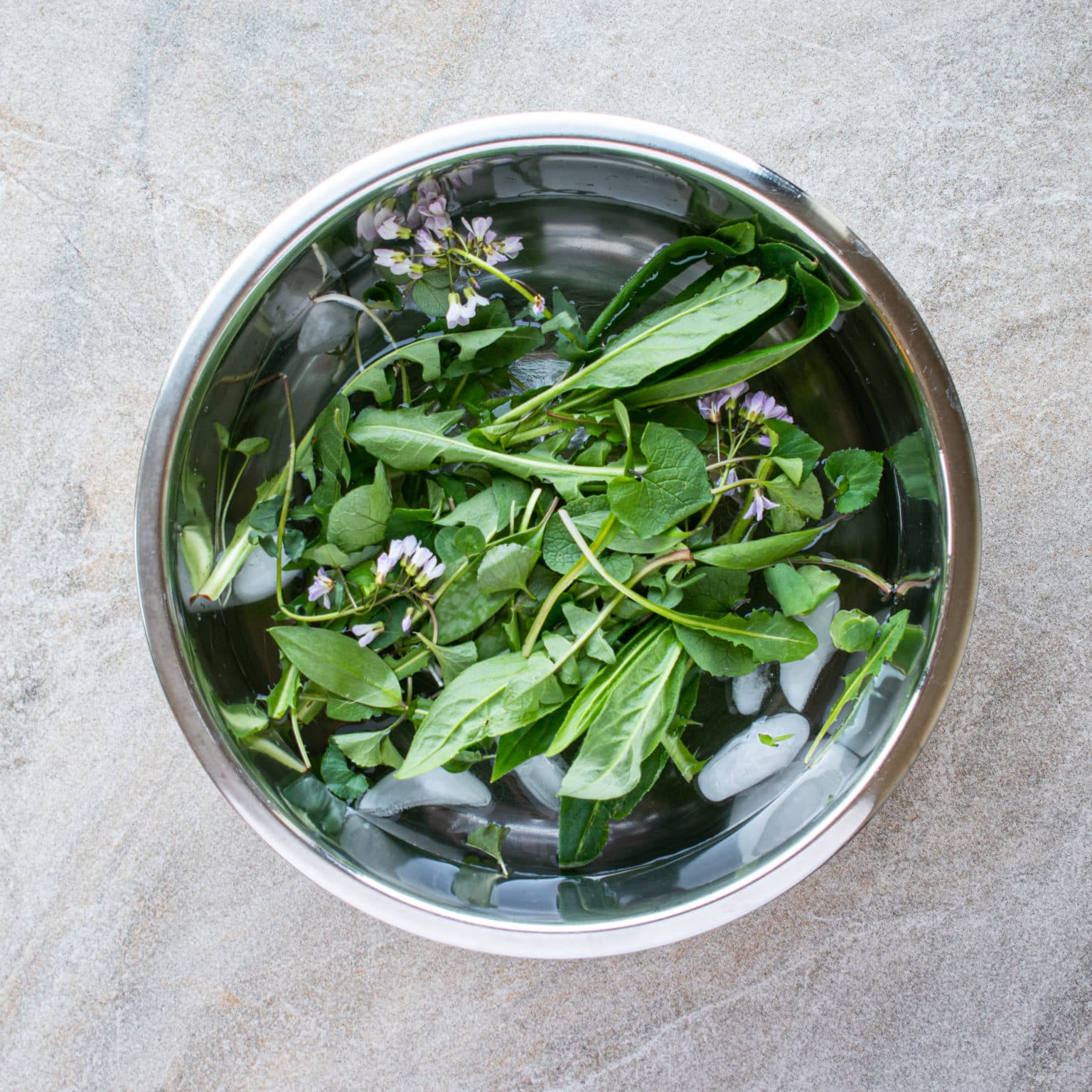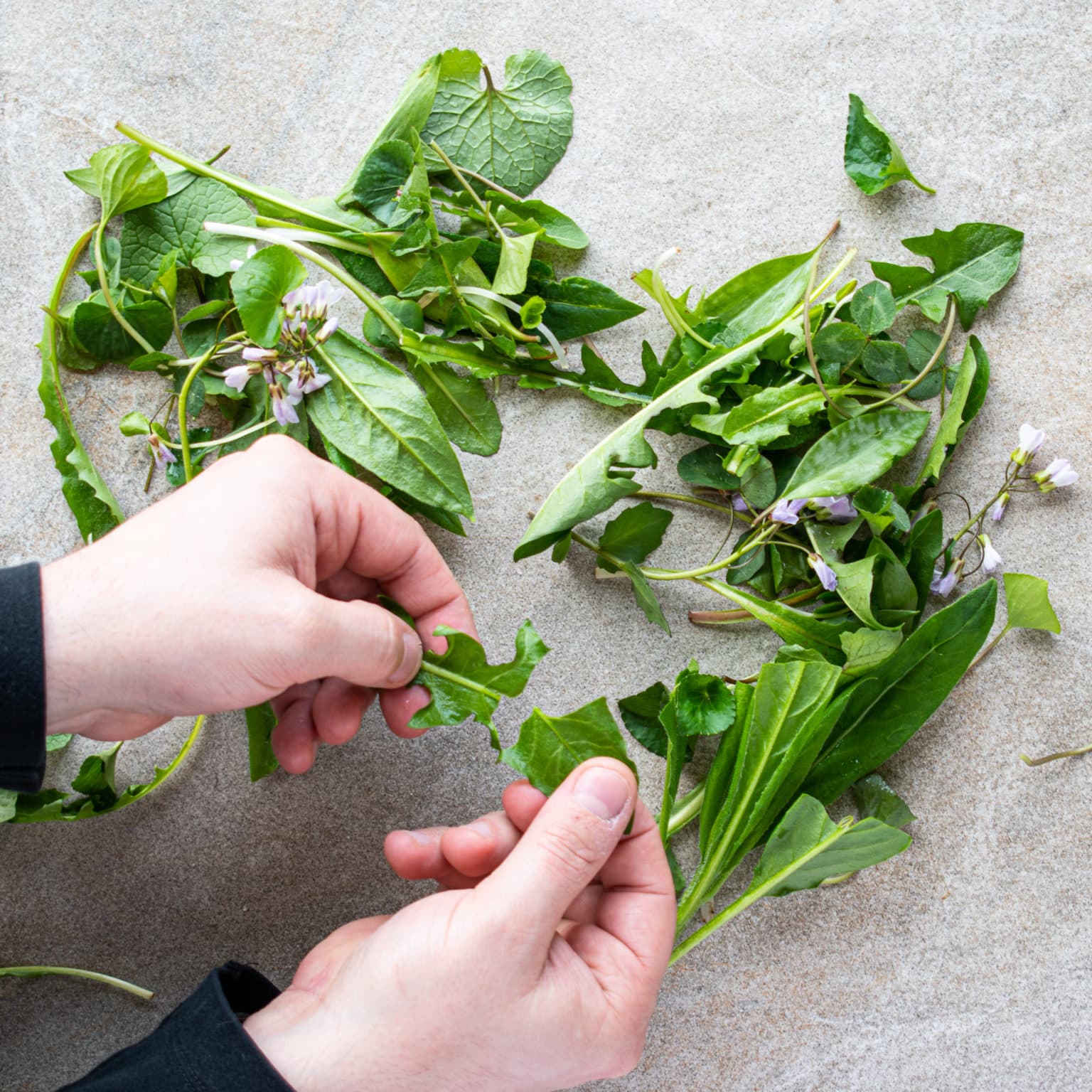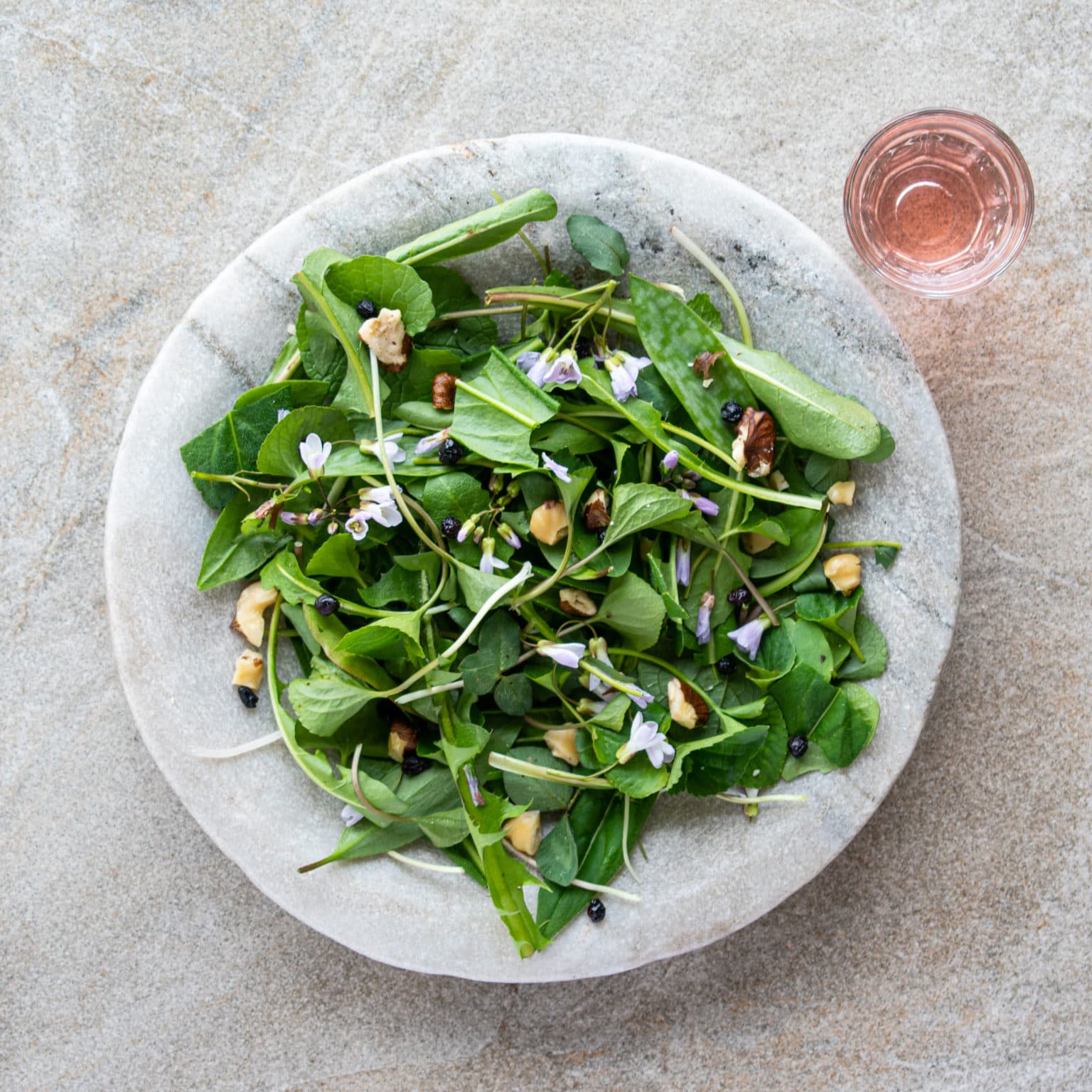How to Create a Wild Salad
Overview:
INGREDIENTS:
Preparation:
Collect the wild greens you use or get them from Foraged.

Thoroughtly wash and clean your greens, trimming away any soft or brown spots.

3. Tear large leaves into bite size pieces, then combine in a bowl.

4. Add your toppings. Dress leaves just before serving.

What greens should I use in a wild salad?
When creating a wild salad, you can use any tender green or flower that can safely be eaten raw – but we do have recommendations on what greens will make your plate vibrant and tasty! If you don’t balance the diverse flavors of wild leaves and flowers, you can end up with a salad that overpowers your dressing, or worse, tastes bland. The basic formula we recommend is 2 parts mild greens plus 1 part accent greens. Let us explain:
Mild Greens
The bulk of the mixture should be built from leaves with a more neutral flavor and a tender texture.
Mild Greens: violet, asiatic dayflower, lady’s thumb, clover, young plantain, dame’s rocket, chickweed, jewelweed, lamb’s quarters…
Accent Greens
The rest of the salad base should be comprised of more strongly flavored accent greens, which we’ve categorized below. Generally speaking, we recommend sticking to one category when creating your salad – try not to combine too many contrasting flavors in one dish.
Bitter or Mustardy Greens: dandelion, purple cress, winter cress, garlic mustard, wild mustard, hairy bittercress…
Herbaceous Greens: carrot, ramps, wild garlic chives, mint, purple dead nettle, mugwort, spruce tips, dandelion flowers…
Sour Greens: wood sorrel, sheep’s sorrel, young curly dock, eastern redbud flowers…
Textural Greens: saltbush, purslane, greenbrier, Japanese knotweed…